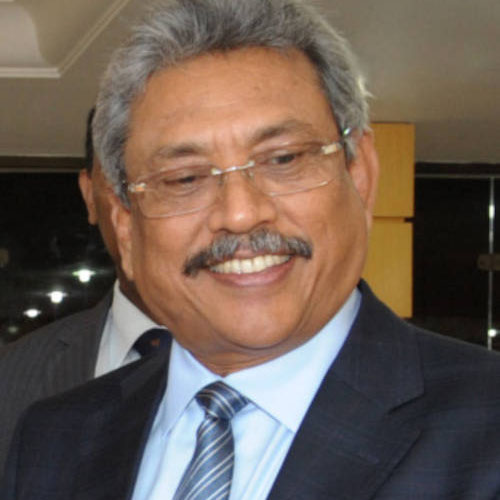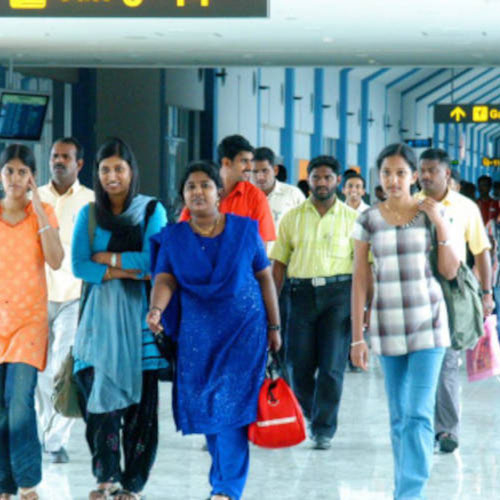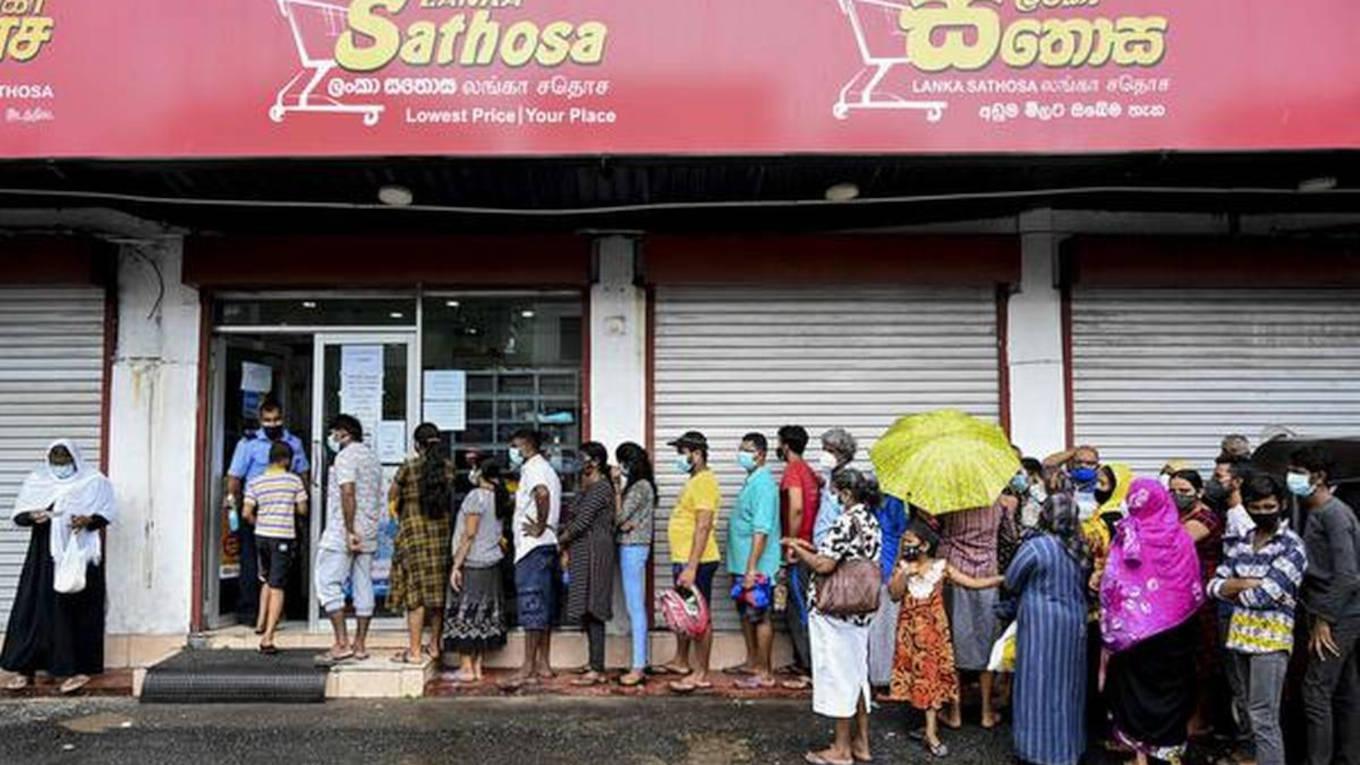-

Rajapaksa: wrong policies wreak havoc
China’s growing footprint in the island nation is evident from the fact that as of June 2019, China’s loans to the Sri Lankan public sector amounted to 15 per cent of the central government’s external debt, making China the largest bilateral creditor to the country. Unable to service its debt, in 2017, Sri Lanka lost the unviable Hambantota port to China for a 99-year lease.
Nevertheless, Sri Lanka has increasingly relied on Chinese credit to address its foreign debt burden. Many loans have been negotiated between Colombo and Chinese institutions, including a recent syndicated loan for budgetary support of $1.3 billion from China Development Bank and a $1.5 billion currency swap pact with the People’s Bank of China this March. In August, Sri Lanka signed a loan agreement with China worth 2 billion Renminbi ($308 million) to support its Covid-19 response, economic revival and financial stability.
In addition to providing emergency anti-epidemic medical supplies, China has stepped up its “vaccine diplomacy” with a leading Chinese pharma company preparing to set up a manufacturing plant to make anti-Covid jabs in Rajapaksa’s home district, Hambantota. The development comes months after India gifted 500,000 doses of the Covishield vaccine to Colombo, which kicked off Sri Lanka’s vaccine roll-out in late January. But in the first week of April, Sri Lanka had to temporarily suspend its vaccination programme because of the delay in the supply of Covishield jabs from India. The Sino-Lanka vaccine arrangement was subsequently hastened. In all, China has so far donated some 2.7 million vaccine doses to the island nation, a mix of the two Chinese jabs. Colombo has additionally purchased more than 12 million doses from China as well.
China’s exports to Sri Lanka surpassed those of India in 2020 and stood at $3.8 billion. India’s exports were $3.2 billion. Owing to Sri Lanka’s strategic location at the intersection of major shipping routes, China has heavily invested in its infrastructure (estimated at $12 billion between 2006 and 2019). In May, Sri Lanka passed the Colombo Port City Economic Commission Act, which provides for establishing a special economic zone around the port and also a new economic commission, to be funded by China.
Deteriorating relationships
On the other hand, relations between India and Sri Lanka seem to have plummeted since the beginning of this year. In February, Sri Lanka backed out from a tripartite partnership with India and Japan for its East Container Terminal Project at the Colombo Port, citing domestic issues. Later, the West Coast Terminal was offered under a public private partnership arrangement to Adani Ports and Special Economic Zones Ltd.
It would appear that among our neighbouring economies, Sri Lanka has been hit the hardest by the pandemic. Tourism is one of the mainstays of the island nation’s economy and that has been badly hit. In fact, tourism had suffered since the Easter Sunday terror attacks of 2019. The pandemic followed. Earnings fell from $3.6 billion in 2019 to $0.7 billion in 2020. Even FDI inflows halved from $1.2 billion to $670 million over the same period.
-
China’s growing footprint in the island nation is evident from the fact that as of June 2019, China’s loans to the Sri Lankan public sector amounted to 15 per cent of the central government’s external debt, making China the largest bilateral creditor to the country
Pre-Covid, India was Sri Lanka’s largest tourist source market. Sri Lanka could welcome just 5,040 tourists in August 2021. Canada became the top source country in August with 594, up from 178 in July, followed by Germany 515, UK 489, Pakistan 456 and India 405. There were 311 visitors from the US, 248 from France and 247 from Russia. Canada and the US are among countries that have high levels of Sri Lankan migrants.
In a bid to get over the situation, Sri Lanka has just opened its borders to Indian tourists, with a tempting ‘one plus one’ offer on return tickets from the Sri Lankan capital on Sri Lankan Airlines. The offer is valid until 31 October. Vaccinated tourists can now head for Sri Lanka without any quarantine time. You will be tested upon arrival, but once proven negative for Covid-19, you can head straight to your sightseeing destination. Sri Lanka is also giving extended for ‘digital nomad’ visa to tourists who can stay for several months working online in their home countries.
The food crisis in Sri Lanka is of its own making. As it is, Sri Lanka is dependent on food imports. A ban on use of fertilisers by Rajapaksa, who wants agriculture to turn totally organic, has made matters worse. In April, the government banned imports of chemical fertilisers, pesticides and herbicides, to encourage organic farming. The move and its implementation have been criticised. T
he productivity of the organic fertiliser is less than chemical fertilisers, it has decreased production. About 90 per cent of Sri Lanka’s farmers had been using chemical fertilisers. The highest dependence on chemical fertilisers is among those growing rice, rubber and tea. Tea accounts for 10 per cent of export income, and some producers are fearing they may lose up to 50 per cent of their crop production.
What can India do to recapture its position as the pre-eminent development partner of Sri Lanka? India will have to step up its Neighbourhood First policy with the island nation to preserve its strategic interests in the Indian Ocean region. Of late, India has been content throwing small change at Sri Lanka, like the $100 million loan it signed in June to expand solar power coverage. It is yet to respond to the request for postponement of its $960 million debt repayment.
Last July, the Reserve Bank of India (RBI) had signed a currency-swap agreement with the CBSL under the Saarc Currency Swap Framework 2019-22, for withdrawals of up to $400 million. The CBSL settled the scheduled facility with RBI in February 2021. Even though the agreement was valid till 13 November 2022, India declined any further renewal of it in the absence of an International Monetary Fund programme to address Sri Lanka’s current macroeconomic imbalances.
-

India was Sri Lanka’s largest tourist source market
Importance of Colombo port
The Colombo port is crucial for India as it handles 60 per cent of India’s trans-shipment cargo. Regional platforms like the Bay of Bengal Initiative for Multi-Sectoral Technical and Economic Cooperation and the Indian Ocean Rim Association could be leveraged to foster cooperation in common areas of interest like technology-driven agriculture and marine sector development, IT and communication infrastructure, renewable energy, and transport and connectivity. Both countries could also cooperate on enhancing private sector investments to create economic resilience.
In 2020, before the pandemic struck, India’s Neighbourhood First policy towards Sri Lanka was resonating well with Sri Lanka’s India First foreign and security policy. India is Sri Lanka’s third largest export destination, after the US and the UK. More than 60 per cent of Sri Lanka’s exports enjoy the benefits of the India-Sri Lanka Free Trade Agreement, which came into effect in March 2000. India is also a major investor in Sri Lanka. India’s development partnership with Colombo has always been demand-driven, with projects covering social infrastructure like education, health, housing, access to clean water and sanitation, besides industrial development.
Concessional financing of about $2 billion has been provided to Sri Lanka through various Indian government-supported Lines of Credit across sectors (for railway connectivity, infrastructure, supply of defence equipment, security, and counter-terrorism and solar projects, among others). Foreign direct investment (FDI) from India amounted to around $1.7 billion over the years from 2005 to 2019 and went into retail petroleum, hotels and tourism, real estate and manufacturing, apart from telecom, banking and financial services.
Yet when Sri Lanka needs India’s helping hand and guidance the most, New Delhi has been found wanting. Its tight-fisted approach is said to have put off Colombo’s ideologically neutral civil society groups who had legally challenged in the top court a recently-gazetted Bill on the Chinese-backed Port City in the capital city, arguing it “directly affects” Sri Lanka’s sovereignty.
-
Of late, India has been content throwing small change at Sri Lanka, like the $100 million loan it signed in June to expand solar power coverage. It is yet to respond to the request for postponement of its $960 million debt repayment
Anatomy of an emergency
• Sri Lanka, a net importer of food and other commodities, saw a surge in Covid-19 cases and deaths which has hit tourism, one of its main foreign currency earners.
• Partly as a result of the slump in tourist numbers, Sri Lanka’s economy shrank by a record 3.6 per cent last year.
• The Sri Lankan rupee has fallen by 7.5 per cent against the US dollar this year. The Central Bank of Sri Lanka recently increased interest rates in a bid to shore up the local currency.
• According to bank data, Sri Lanka’s foreign reserves fell to $2.8 billion at the end of July, from $7.5 billion in November 2019 when the government took office. The rupee has lost more than 20 per cent of its value against the US dollar in that time.
• The Rajapaksa government declared an economic emergency to contain soaring inflation and prevent hoarding of food after a steep fall in the value of the country’s currency caused a spike in food prices, particularly of rice, sugar onions and potatoes.
• The government appointed a former army general as commissioner of essential services, who will have the power to seize food stocks held by traders and retailers and regulate their prices.
• The military is overseeing the action which gives power to officials to ensure that essential items, including rice and sugar, are sold at government-guaranteed prices or prices based on import costs at customs and prevent hiding of stocks.
• The wide-ranging measure is also aimed at recovering credit owed to State banks by importers.




































